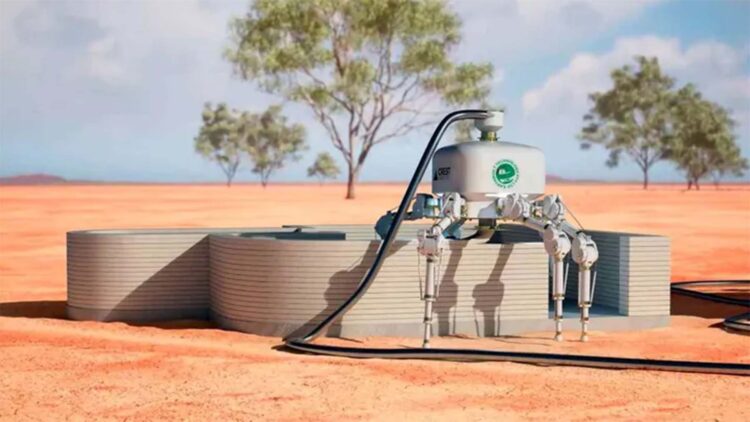The housing crisis is real, and it affects millions of people around the world. Many struggle to find a rental or to buy at reasonable prices. In Australia, a project is bringing possible help to accelerate solutions: the project name is Charlotte, a construction robot able to use 3D printing to lift structures quickly and with few materials. According to Fox News, this system can built, in test conditions, a house of 198 square meters in just 24 hours.
The material that uses to build is a mix of sand, crushed brick y recycled glass. With this components, prototypes promise fire and flood-resistant walls, and a process that fits with sustainability and green construction. Even though is still in development phase, the idea is clear: if this tests are able to keep escalating, printed homes could be fabricated in less time, with less waste and pushing a new way for architectural innovation.
How does Charlotte work?
Charlotte “prints” by layers. Kind of like giant bag filled with dough that, guided by a digital plane, deposits material until it forms complete walls. This is what we call 3D printing, it avoids placing block by block, which reduces slow constructions. In the testing, the team explains that the performance of a single construction robot in 24 hours is equivalent to the work of many people, because the machine does not stop and keeps a constant rhythm. Besides, the bas material (sand, crushed bricks and recycle glass) is simple, reusable and easy to find.
Another point in favor is, that it produces way less waste, which adds to a sustainable and green construction.
However, let’s not forget that there are still some limits today: the prototypes done until now, are small scales, designed to validate the system and learn to work better, there’s time left until a final version builds a big scale house with the same precision and speed that we see in trials.
How this could change the way we see housing (and beyond)
If this technology matures well, it could reduce delivery timing and eliminated some expensive costs form traditional construction, which is highly important in the housing crisis many countries are living in today. In emergency situations, like after a flood, Charlotte could produce printed homes faster, this would make a huge difference.
But the project goes even further than that: researchers are planing to adapt this method to space technology to fabricate lunar shelters issuing materials that are available in Moon surfaces, (just like here, on Earth they’re using materials that suit us).
In other words, the same principle could be applied to build up safe refugees out of our planet. Sounds cool right?
That visions puts Charlotte as a real architectural innovation symbol. A tool that—if works—could help both neighborhoods in urgent need of housing and space missions that require fast, solid and efficient structures.
What’s missing for it to be a reality
Although initial results are great, and very promising, there are still come challenges: first, jumping from prototype to real work asks for more validation, like weather resistance, durability, safety norms, and how habitable it really is. Then, it need trained employees that know how to design for 3D printing, operate the construction robot and make the mixture base in different conditions. Finally, costs will need to be calculate to the bigger scale, and adjust regulations to accept printed homes as a formal solution.
It doesn’t mean that is impossible, but it will take time and a lot of trial and error to get there. The good news is that is already on our radars, and follows what cities are looking for these days: to built better, more efficient and without much waste.

